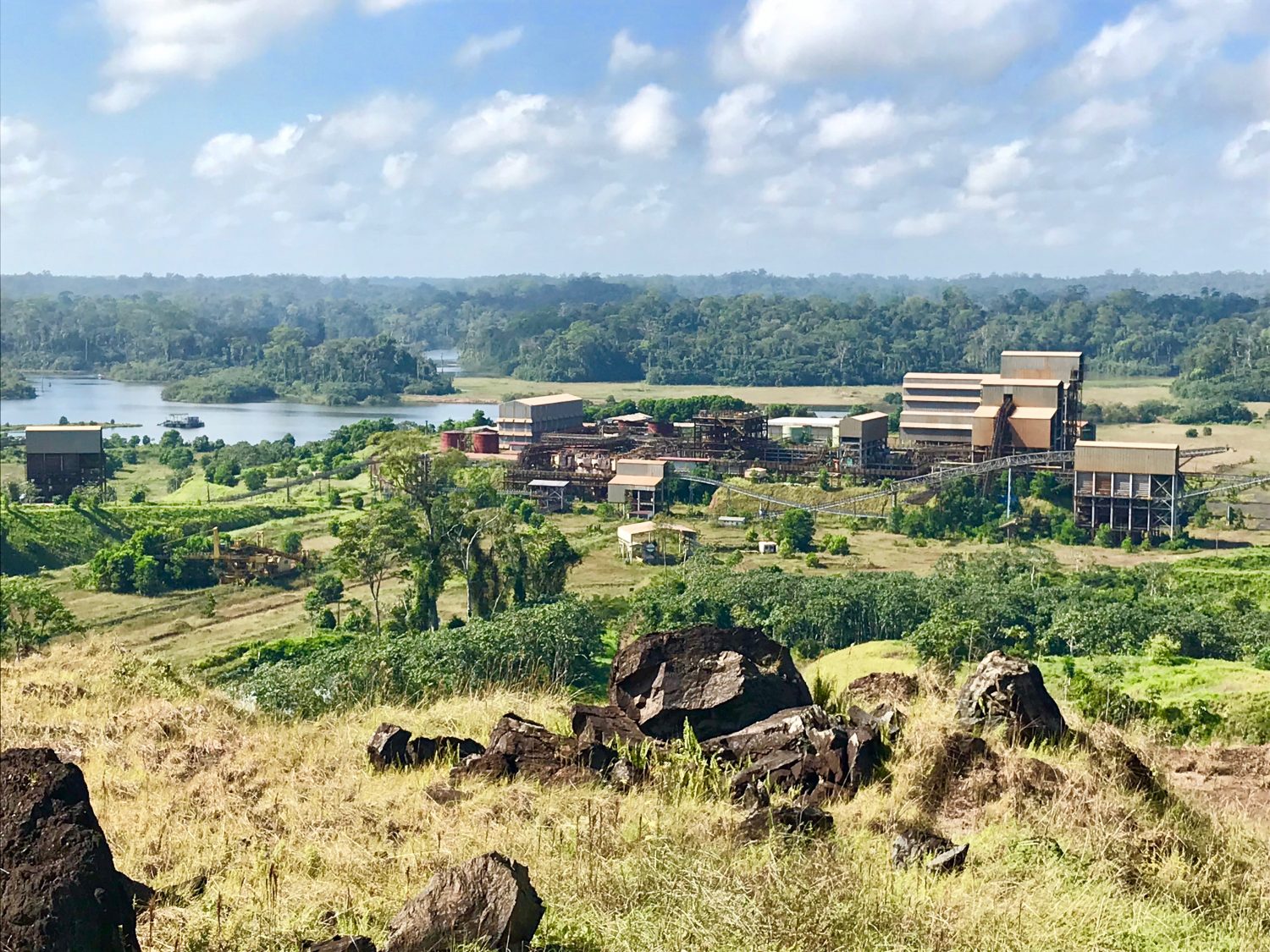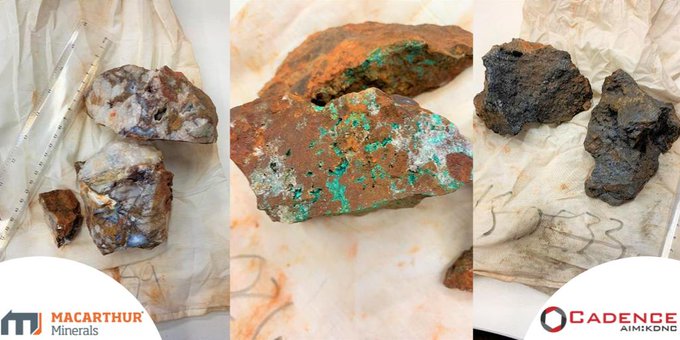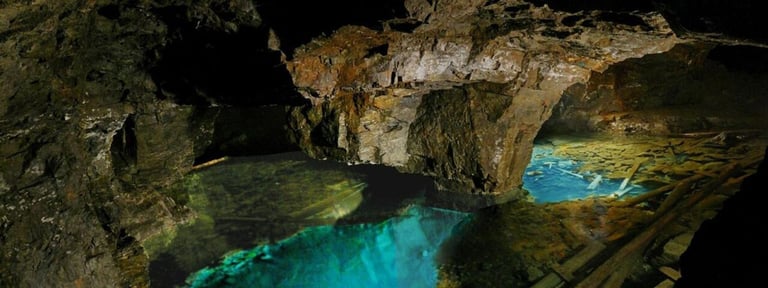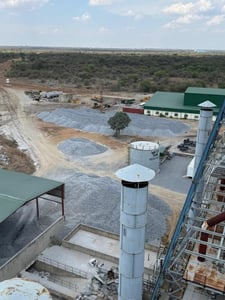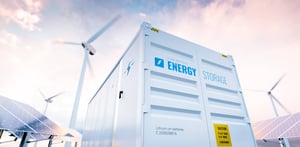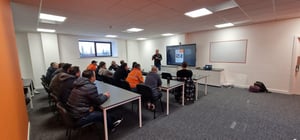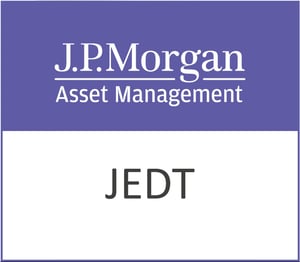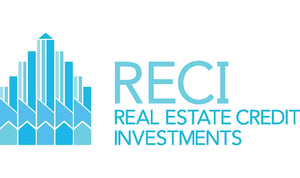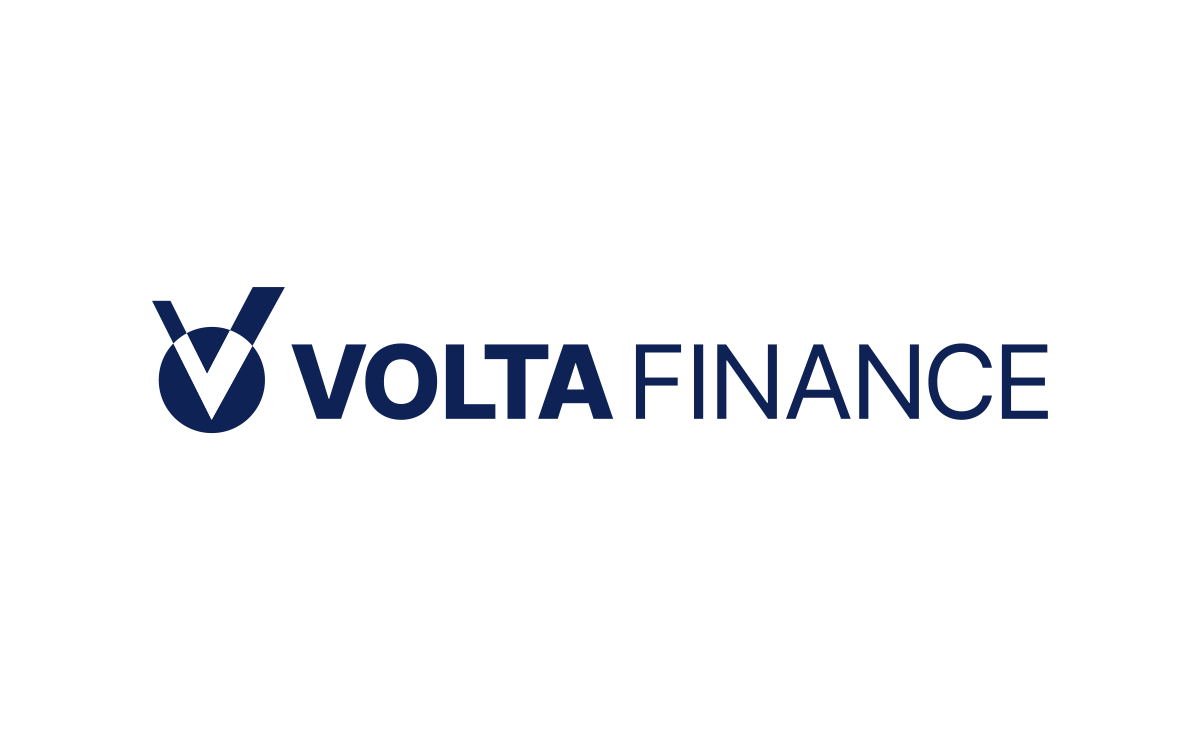Cadence Minerals plc (LON:KDNC; OTC: KDNCY) has announced its final results for the year ended 31 December 2020. A copy of the full results will be made available on the Company’s website at https://www.cadenceminerals.com/ and will be posted to shareholders today.
CHAIRMAN’S STATEMENT
I am pleased to present the Company’s Annual Report and Audited Financial Statements for the year ended 31 December 2020.
In my previous statement to you as Chairman, I surmised that the economic contraction, whilst severe and turbulent, would hopefully recover rapidly due to global stimulus measures. Today, despite the persistent dislocations and disruptions of the global pandemic, this view is supported by several key metrics, including higher commodity prices.
On behalf of the Board of Directors (“Board”) and management, I wish to express our thanks and gratitude to all our service providers, consultants, advisors and most importantly to our shareholders for their support throughout a difficult year. Despite the unpredictable nature of the pandemic, the Board and the Company have been able to operate efficiently and successfully. We are well-positioned to transition back to our regular pre-COVID work schedule as and when that is permitted. Our sincere hope that all within our community have kept themselves and their families safe and well.
Without any specific order or priority, our Board wishes to congratulate the successes and achievements of our portfolio companies. Bacanora has successfully negotiated agreements with one of the Worlds biggest Lithium producers, European Metal Holdings has continued to develop Cinovec, the largest hard rock Lithium deposit in Europe, Macarthur Minerals has taken great strides forward with the Lake Giles Iron project and its respective BFS, and Hastings Technology Metals has been at the front and centre of the global focus on rare earth metals. While remaining as supportive shareholders to these companies, our Board remains focused on unlocking and accelerating the value across our entire portfolio. To this extent, despite the challenges thrown up by COVID in conducting thorough due diligence, we have continued to look for new investment opportunities to complement our geographic and geological spread.
The pandemic has provided new perspectives on developing our portfolio, none more so than at our key pending investment – the Amapa Iron Ore (“Amapa Project”) project in Brazil. The main priority for the Board has been following the processes and protocols outlined in the Judicial Review Procedure, which have been meticulously and publicly disclosed at every step of the journey. Our management team have maintained a patient and persistent approach, following what was always expected to be a protracted route to bring the mine and community back to life. Today, supported by a 21% increase in total mineral resources compared to the equivalent MRE published by Anglo American 2012 and with the global supply of iron ore still falling short of predicted global demand, the Amapa opportunity looks better than ever.
The unprecedented levels of global economic stimulus, combined with a focus on infrastructure and an overarching need for strategic supply chains for metals and minerals, suggests our portfolio is well-positioned to benefit. Commodity prices have responded to a rapid economic recovery, especially in China. If legislated clean energy goals, electric vehicle production and infrastructure spending is executed and adopted as announced by the incumbent administrations around the globe. In that case, we envisage strong demand growth for the underlying commodities at the heart of the Cadence portfolio. We do not predict prices, but it is worth noting that peak predictions often come at peak prices. As such, our focus on the long-term fundamentals of each commodity allows for a more sustainable and longer-term investment thesis.
While the challenges of the pandemic remain in focus, I would like to conclude by personally thanking our Cadence Community, management, fellow Board members, staff and partners and of course, all Shareholders for their continued support and confidence in the Company.
Andrew Suckling
Non-Executive Chairman, 29 June 2021
CHIEF EXECUTIVE OFFICER’S COMMENTARY
I am pleased to present the audited results for the year ended 31 December 2020. Alongside the financial statements and supporting notes, a full review of business activities during the year is provided within the Strategic Report.
Given the results presented for the period ended 31 December 20, they reflect a historical position in terms of the Company progress and its financial position, so we have included within the Strategic Report further information on key events post year-end.
Despite 2020 being a year of turbulence, Cadence has continued to pursue its strategic objectives because we believe that assets that are undervalued, de-risked, or have strategic advantages will outperform their peers in the long term. During 2020 this strategy bore fruit with the Company delivering both a net profit of £7.8 million (2019 loss of £1.9 million) and reporting considerable progress across its key investments. Furthermore, in 2020, the Company repaid the vast majority of its outstanding convertible debt and in April 2021 repaid it entirely.
The challenges faced with the onset of the COVID-19 pandemic earlier in 2020 presented the Company with some potentially large risks to its concentration of investments. In October 2020, the IMF stated that the total bill for the global pandemic would reach some $28tn (£21.5tn) in lost output. The rapid intervention by global governments with rate cuts, looser monetary policies and fiscal stimulus has certainly avoided a financial catastrophe, but at the same, increased demand for commodities. Historically the consequences of such events invariably see a strong recovery in commodity markets. This factor was clearly in evidence as 2020 progressed. Prices of commodities such as Iron Ore and Nickel and precious metals including Gold and Silver all increased in value.
In the wake of the sharp economic contractions in 2020, the IMF forecast that only China was expected to emerge with any economic growth during the year. 2021 is set to be a different story, however, and with the vaccine rollout accelerating globally, there are expectations for sharp recoveries across most leading economies. Added to this, the new $1.9tn stimulus package in the US from the Biden administration will see heavy investment into ageing US infrastructure. These factors should ensure sustained demand and pricing for iron ore and base metals.
There is also the revolution taking place within the automotive industry to consider. The move towards EV’s is accelerating rapidly, with a plethora of commitments from key automotive manufacturers such as Ford, Volvo, BMW and Jaguar to switch to electric-only production in the next few years. This move, of course, sounds the death knell for the internal combustion engine, but at the same time is driving the cost of battery metals and component commodities such as lithium, nickel, cobalt and graphite
The net effect is that specific commodities and minerals assets that we have invested in are undergoing a significant global resurgence. I believe that our diverse and complementary nature of investments is uniquely positioned, with downside risk protection and several potential scenarios which could create substantial value to the Company
Our portfolio has been focused on two main investments, and the first is the private Amapa Project. The terms of our investment and the judicial recovery plan were finalised in 2019. The key outstanding item for Cadence to complete its initial US$2 million (20%) investment in the Amapa Project is the execution of a settlement agreement with the secured bank creditors. During the year, we reached an agreement in principle with secured banks creditors. At the time of writing, we understand the secured creditors either have credit committee approval or are awaiting it. The final settlement agreement has been circulated and is with the respective legal teams for review.
Given the time it had taken for the secured bank creditors to obtain internal approval for the settlement agreement in February 2021, the Commercial Court of São Paulo (“the Court”) ruled that DEV Mineração S.A’s (“DEV”) the owner of the Amapa Project could commence the shipment of the iron ore stockpiles situated at DEV’s wholly-owned port in Santana, Amapa, Brazil. DEV was permitted to export sufficient iron ore to realise a US$10 million profit from the Amapa stockpiles at the port. As of the end of June 2021, DEV had shipped three of the estimated four shipments of 58% iron ore required to net US$ 10 million profit. DEV is also contracted to carry out logistical and shipping activities for third parties who have stockpiles held at DEV’s port.
Despite the lack of a settlement agreement, Cadence, our joint venture partners, Indo Sino Pte Ltd (“Indo Sino”), and DEV determined that it was essential to progress the Amapa Project. In this vein, we completed an updated mineral resource statement increasing the total mineral resources by 21%. In addition, we have commenced various other work streams which will enable us to complete and a pre-feasibility study.
As we have mentioned on numerous occasions, the opportunity to invest in such a project is rare within our industry, and we believe this project provides us with a potentially transformative asset for our Company. The Amapa Project gives Cadence the potential for an exceptional return on investment in the run-up to full production and an opportunity to become a significant shareholder in a mid-tier iron ore producer.
The second of our key investments is European Metals Holdings (“EMH”), whose strategy is to become a Czech based lithium and tin producer. During the year, EMH’s Cinovec Project has been significantly de-risked and is moving rapidly towards a final investment decision. The year was marked primarily by the completion of an agreement with CEZ a.s., the Czech national power utility, by which CEZ became a 51% shareholder of the Project Company, Geomet and injected approximately EUR 29 million into Cinovec. This agreement not only provides all necessary funding to move the Project to the final investment decision, but it also provides strong business and management support within the Czech Republic.
I would like to record my thanks to the team members at Cadence and our investee companies who have all worked incredibly hard to bring the Company and its investment to its present strong position. We continue to deliver on identifying opportunities in line with our investment strategy, and we believe the concentration of risk across a few key assets and commodities will bear fruit. Our investments have some downside protection, optionality and exposure to potentially significant upside.
We look forward to continuing to actively assess investment opportunities as well as managing them actively and diligently.
Kiran Morzaria
Chief Executive Officer, 29 June 2021
INVESTMENT REVIEW
As outlined in the section “Our Business and Investment Strategy,” Cadence operates an investment strategy in which we invest in private projects via a private equity model and in public equity. In both investment classes, we take either an active or passive role. We have reported in these segments below.
The Amapa Iron Ore Project, Brazil
Private Investments (Active)
The Amapa Project is a large-scale iron open pit ore mine with associated rail, port and beneficiation facilities that commenced operations in December 2007. Production increased to 4.8 Mt and 6.1 Mt of iron ore concentrate product in 2011 and 2012, respectively. Before its sale in 2012, Anglo American valued its 70% stake in the Amapa Project at US$462m ( 100% US $600m).
In 2019 Cadence entered into a binding investment agreement to invest in and acquire up to 27% in the Amapa iron ore mine, beneficiation plant, railway and private port owned by DEV (“The Agreement”). The Agreement also gave Cadence a first right of refusal to increase its stake to 49%.
To acquire its 27% interest, Cadence will invest US$6 million over two stages in a joint venture company. The first stage is for 20% of the JV, the consideration for which is US$2.5 million. The second stage of investment is for a further 7% of JV for a consideration of US$3.5 million. The investments are wholly contingent on DEV delivering several key preconditions.
During the year, the key driver for the Company was to satisfy the remaining major precondition for Cadence to make its investment in the Amapa Project (the monies of which are currently held in escrow in a judicial trust account). This precondition requires DEV and the investors (Cadence and Indo Sino via our joint venture company) to reach a settlement agreement with the secured bank creditors. During the year, we spent our time negotiating with secured bank creditors. This process was frustrating, given that we have been dealing with four banks across five different time zones and three different business cultures and various internal approvals. This was further complicated that during the process, two of the banks underwent a merger and changed personnel and processes. Nonetheless, all parties reached an agreement in principle in late 2020.
Subsequent to this date, the internal process of approval within two of the secured lenders in India was further delayed due to an increase in infections of the SARS-CoV-2 delta variant. Nonetheless, we are highly confident that we will be able to execute a settlement agreement, as, at the time of writing, we understand the secured creditors have had either credit committee approval or are awaiting it, and the final settlement agreement has been circulated and is with the respective legal teams for review. Once this precondition has been met, Cadence will release its monies held in escrow, at which point Cadence will become a 20% shareholder in the Amapa Project via our joint venture company which will own 99.9% of DEV.
Subsequent to the year-end and while negotiations with the secured bank creditors were ongoing, DEV was permitted by the Commercial Court of São Paulo to commence shipment of the iron ore stockpiles situated at DEV’s wholly-owned port in Santana, Amapa, Brazil.
DEV is permitted to export sufficient iron ore to realise a US$10 million profit from the Amapa stockpiles at the port (after the deductions of all logistical, regulatory, shipping and sale costs).
The first portion of the net revenues will be used to pay historic small and employee creditors. R$7.5 million was paid from the first shipment, after which approximately US$ 6 million of the net revenues will be used to begin recommissioning studies on the Amapa Project and to start maintenance and monitoring of the current tailing dam facilities. The remaining net revenues will be used to provide working capital for the operations and for payment against the outstanding amount due to the Bank Creditors.
As of the end of June 2021, DEV had shipped three of the estimated four shipments of 58% iron ore required to net a US$ 10 million profit. DEV is also contracted to carry out logistical and shipping activities for third parties who have stockpiles held at DEV’s port.
On an operational basis during the year, Cadence commissioned an updated mineral resource estimate of the Amapa Project. This resulted in a mineral resource of 176.7 million tonnes (“Mt”) grading 39.7% Fe in the Indicated category and a mineral resource of 8.7Mt at 36.9% in the Inferred category. Both were reported within an optimised pit shell and using a cut-off grade of 25% Fe.
This mineral resource represents a 21% increase in total mineral resources compared to the equivalent mineral resource estimate published by Anglo American 2012. The mineral resource estimate forms the basis of the mine planning studies, which are ongoing, supporting the operational plan to produce 4.4Mt of 65% Fe and 0.3 Mt of 62% Fe per annum. The mineral resource work will form part of a pre-feasibility study.
Work on the pre-feasibility study has started, consultants have been engaged to commence the engineering and conditioning studies on the plant and railway, and in addition, we are in the process of commissioning engineering studies on the tailings damns and the port. We had originally envisaged publishing a scoping study and then progressing to a pre-feasibility study. However, given the delays we have seen in finalising the settlement, the secured bank creditors, DEV, Cadence and Indo Sino, have agreed to progress straight to pre-feasibility level studies. This will shorten the overall development timeline, save capital and provide a more accurate estimate of capital and operational costs (25%-30% as opposed to 45%-50%).
General low-level maintenance is ongoing, and the mine site, tailings dam and port and we are continuing to liaise with the relevant regulatory authorities to obtain the necessary licenses to operate.
The Amapa Project’s Current Development Plan
As part of its due diligence and assessment, Cadence has carried out multiple site visits and commissioned SRK Consulting to provide it with a high-level review of the Amapa Project. This review was based on a site visit, historical analysis and the review of technical independent engineers reports published in 2013 and 2015. It should be noted that this review provides a basis for a preliminary assessment of the project and its potential, but further, more detailed reviews and analysis would be required to provide a Pre-Feasibility or Feasibility Study level report. This would include, amongst other things, providing a current Mineral Resource Estimate and/or Ore Reserves, updated capital and operating costs and an independent assessment of key economic drivers and returns.
The Amapa Project consists of an open-pit iron ore mine, railway and port facility and is located in Amapa State, northeast Brazil. The Amapa mine site, forming part of the Amapa Project, is located near the towns of Pedra Branca do Amapari and Serra do Navio, approximately 200km northwest of Macapa.
The redevelopment programme will broadly follow the stages outlined below:
1. Recommissioning Studies – DEV has started the relevant resource and engineering studies required for banking project finance.
2. Reinvestment of Iron Ore Stockpile Sales.
a. DEV is currently shipping the stockpile under the courts’ approval, outlined previously, and once an executed agreement with the secured creditors is completed DEV, will continue to ship this material. It is anticipated that it will take up to 2 years to ship.
b. An independent survey of these stockpiles carried out post the year-end indicates some 1.39 Mt (+/- 10%) of iron ore in three stockpiles with an average Fe grade of 58%.
c. These funds will be reinvested in the capital development of the Amapa Project; however, they could also be used in part as part of a settlement package with the Bank Creditors.
3. Capital Investment
a. DEV’s estimate of capital costs, which are based on 2013 engineering studies, is anticipated to be a total of US$168 million. This sum includes all the capital investment required to bring the mine, rail and port into full production. This will be updated as part of the pre-feasibility studies and is expected to increase due to the underlying inflation we are currently seeing in the steel markets.
b. The above capital investment will occur after the completion of the recommissioning studies and raising additional capital.
c. The reconstruction is estimated to take approximately 18-24 months after the completion of the recommissioning studies.
4. Operations
a. The ore is planned to be beneficiated to a 65% Fe Pellet Feed and 62% Fe Spiral Concentrate
b. Based on available historic mine plans and an independent consultant review, it is expected that at full production, the Amapa Project has a mine life of 14 years and at full capacity is targeting to produce up to 5.3 Mt of Iron Ore per annum
Lithium Technologies Pty Ltd & Lithium Suppliers Pty Ltd (“LT” & “LS)
Private Investments (Active)
In December 2017, Cadence Minerals announced that it had executed binding investment agreements to acquire up to 100% of six prospective hard rock lithium assets in Argentina via LT & LS, which was subsequently varied to acquire three prospective assets in Australia that are in regions with proven high-grade lithium mineralisation. The acquisition covered three projects – Picasso (Western Australia – WA), Litchfield (Northern Territories – NT) and Alcoota (NT), all of which are in regions with proven lithium mineralisation and supportive mining infrastructure.
As of the date of this document, Cadence owns 25.875% of LT & LS and consequently of the Australian and Argentinian lithium prospects.
During the year, our joint venture partners maintained the licenses but carried out no further work on these areas. This is because Cadence believes that our capital and time should be focused on our investment in the Amapa Project, which is of a lower risk profile than LT and LS investment.
Sonora Lithium Project, Mexico
Private Investments (Passive)
Cadence holds an interest in the Sonora Lithium Project via a 30% stake in the joint venture interests in each of Mexalit S.A. de CV (“Mexalit”) and Megalit S.A. de CV (“Megalit”).
Mexalit forms part of the Sonora Lithium Project. The remainder of Mexalit and Sonora Lithium Project is owned by Bacanora Lithium Plc (“Bacanora”), which is a London-listed lithium asset developer and explorer.
The Sonora Lithium Project consists of ten contiguous concessions covering 97,389 hectares. Two of the concessions (La Ventana, La Ventana 1) are owned 100% by Bacanora through its wholly-owned subsidiary Minera Sonora Borax S.A de C.V. (“MSB”). El Sauz, El Sauz 1, El Sauz 2, Fleur and Fleur 1 concessions are owned by Mexilit S.A. de C.V. (“Mexilit”), which is owned 70% by Bacanora and 30% by Cadence.
The Sonora Project holds one of the world’s larger lithium resources and benefits from being both high grade and scalable. The polylithionite mineralisation is hosted within shallow dipping sequences, outcropping on the surface. A Mineral Resource estimate was prepared by SRK Consulting (UK) Limited (‘SRK’) in accordance with NI 43-101. The following tables present the summary of current lithium resources for the Project and the attributable amounts to Cadence; these Mineral Resources are inclusive of Mineral Reserves:
MINERAL RESERVES (Cut-off grade of 1,500 ppm Li)
| Category | Tonnes Ore (000t) | Li (ppm) | K (%) | LCE (000t) | LCE attributable to Cadence (000t) |
| Proven | 80,146 | 3,905 | 1.64 | 1,666 | 116 |
| Probable | 163,662 | 3,271 | 1.36 | 2,849 | 723 |
| Total | 243,808 | 3,480 | 1.45 | 4,515 | 839 |
MEASURED AND INDICATED MINERAL RESOURCES (Cut-off grade of 1,000 ppm)
| Category | Tonnes (000t) | Li (ppm) | K (%) | LCE (000t) | LCE attributable to Cadence (000t) |
| Measured | 103,000 | 3,480 | 1.5 | 1,910 | 134 |
| Indicated | 188,000 | 3,120 | 1.3 | 3,130 | 785 |
| Total | 291,000 | 3,250 | 1.4 | 5,038 | 919 |
INFERRED MINERAL RESOURCES (Cut-off grade of 1,000 ppm)
| Category | Tonnes (000t) | Li (ppm) | K (%) | LCE (000t) | LCE attributable to Cadence (000t) |
| Inferred | 268,000 | 2,650 | 1.2 | 3,779 | 559 |
A feasibility study report was published in January 2018, which confirmed the positive economics and favourable operating costs of a 35,000 tonnes per annum battery-grade lithium carbonate operation. The feasibility study report estimates a pre-tax project net present value of US$1.253 billion at an 8% discount rate and an Internal Rate of Return of 26.1%, and Life of Mine operating costs of US$3,910/t of lithium carbonate. It should be noted that under the published feasibility study, the concession owned by Mexalit will be mined starting in year 9 of the mine plan cease at the end of the mine life in year 19, and as such, assuming Cadence retains its position, any net realisable economic benefit to Cadence would only accrue at this time.
The full report can be found here: https://www.bacanoralithium.com/pdfs/Bacanora-FS-Technical-Report-25-01-2018.pdf
Summary of Activities
During the year, Bacanora completed a 50% share of the funding requirements of the Sonora Lithium Project; this was via equity raises through the public markets and its cornerstone investor Gangfeng Lithium CO., Ltd (“Gangfeng”). Gangfeng also increased its direct project stake in Bacanora’s stake of the Sonora Lithium Project. This dilution has had no effect on the Company’s 30% stake in Mexalit.
Subsequent to the year-end, Bacanora entered into an agreement dated 6 May 2021 regarding the terms of a possible cash offer by Ganfeng for the entire issued and to be issued share capital of Bacanora other than that which it already owns, at a price of 67.5p per Bacanora share.
Although this does not directly affect the terms of our Joint Venture, should the cash offer be successful, our partner in Mexalit will be Gangfeng. This is highly encouraging for the development of the project, given that Gangfengs involvement in the development of the project to date and their extensive experience in the lithium market holding company is the world’s third-largest and China’s largest lithium compounds producer and the world’s largest lithium metals producer in terms of production capacity. Its operations are vertically integrated, encompassing all critical stages of the value chain, including upstream lithium extraction, midstream lithium compounds and metals processing, as well as downstream lithium battery production and recycling.
Whilst COVID-19 has impacted the Bacanora’s and its partners, work to complete the front-end engineering design (“FEED”) has continued throughout the period, with GR Engineering Services (“GRES”) completing the front-end concentrator and mechanical engineering and Ganfeng completing its flow sheet design testwork for the production of battery-grade lithium from the samples provided by the pilot plant. Ganfeng is continuing to integrate its flow sheet for the production of battery-grade lithium into the overall large scale design and remains on schedule to deliver its final engineering packages to Bacanora in Q2 2021. Ganfeng continues to work with its equipment suppliers to determine equipment delivery times to align with a target of first production in 2023.
In Q1 2021, the Company commenced initial site activities for the development of the Sonora Project. Initial works involve the rescue and removal of surface vegetation and topsoil in the area required for the construction of the lithium processing plant. The Sonora construction team also commenced preparatory work to upgrade the main access road to the site in preparation for providing access for heavy equipment for commencing bulk site earthworks later in the year.
Yangibana Project, Australia
Private Investments (Passive)
The Yangibana Project (the Project) is a significant Australian Rare Earths Project, containing substantial Neodymium and Praseodymium resources. The Project currently covers approximately 650 square kilometres. The Project is located in the Gascoyne region of Western Australia, some 250 kilometres northeast of Carnarvon.
Cadence holds interests in tenements covering some of the prospective Gifford Creek Ferrocarbonatite Complex. Through wholly-owned subsidiaries, Cadence holds:
· 30% interest in 3 Mining Leases, 6 Exploration Licences, and 2 General Purpose Leases;
· 3 Mining Licenses Include:M09/159,M09/161,M09/163;
· 6 Exploration Licenses Included: E09/1043, E09/1049, E09/1703, E09/1704, E09/1705, E09/1706;
· 2 General Purpose Leases: G09/11, G09/13.
The tenements in which Cadence holds a 30% interest are in joint-venture with Australian listed Hastings Technology Metals (“Hastings”), and Hastings carries all costs up to the decision to commission a bankable feasibility study.
Summary of Activities
During the year, Hastings updated their mineral resources and ore reserve estimate (JORC 2012); the result that affects our joint venture area are reported below:
Yangibana M09/163 (JV Tenement 30% of Total to Cadence)
| Category | Million Tonnes | %TREO | % Nd2O3+Pr6O11 |
| Indicated | 0.11 | 0.78 | 0.39 |
| Inferred | 0.05 | 0.85 | 0.42 |
| TOTAL | 0.16 | 0.80 | 0.40 |
Yangibana North M09/159 (JV Tenement 30% of Total to Cadence)
| Category | Million Tonnes | %TREO | % Nd2O3+Pr6O11 |
| Measured | 0.29 | 1.35 | 0.35 |
| Indicated | 1.66 | 1.43 | 0.37 |
| Inferred | 0.60 | 1.43 | 0.37 |
| TOTAL | 2.55 | 1.42 | 0.37 |
Probable ore reserves within JV tenements 30% of Total to Cadence
| Deposit | Million Tonnes | %TREO | %Nd2O3+Pr6O11 | Nd2O3+Pr6O11 as % of TREO |
| Yangibana | 0.10 | 0.78 | 0.39 | 50 |
| Yangibana North | 1.76 | 1.39 | 0.37 | 26 |
| TOTAL | 1.86 | 1.36 | 0.37 | 28 |
Hastings also reported in June an update to their economic model a reported the following financial evaluation results: No costs or revenue ascribed to the 30% interest in the deposits held by Mojito Resources are reported in the financial modelling.
| Operating Life | 13.0 years |
| Net Present Value (NPV) | A$549 million |
| Internal Rate of Return (IRR) | 21.1% |
| Payback Period | 3.4 years |
The economic model assumes Cadence will participate in the development and mining of the deposits held 70% by Hastings in a joint venture with our subsidiary Mojito Resources (30%) under the ‘Yangibana Joint Venture Agreement’. As set out in the “Probable ore reserves table” above, the specific deposits to which the joint venture applies are Yangibana and Yangibana North.
Assuming there is a development of the mine by the joint venture, not only will there need to be a Mining Joint Venture Agreement agreed and put in place to replace the existing joint venture documentation and regulate the arrangements between the participants for the mine development, but arrangements will also need to be established to determine how the Yangibana production and tenements (the subject of the joint venture) fit with the broader 100% Hastings group-owned production and tenements.
European Metals Holdings Limited (“European Metals”)
Public Equity (Active)
Cadence has held an investment in European Metals since June 2015. As of year-end, Cadence held 12.97% in the Cinovec deposit in the Czech Republic through a direct holding in the share capital of European Metals that owns 100% of the exploration rights to the Cinovec lithium/tin deposit.
Cinovec hosts a globally significant hard rock lithium deposit with a total Indicated Mineral Resource of 372.4Mt at 0.45% Li2O and 0.04% Sn and an Inferred Mineral Resource of 323.5Mt at 0.39% Li2O and 0.04% Sn containing a combined 7.18 million tonnes Lithium Carbonate Equivalent and 263kt of tin reported 28 November 2017. An initial Probable Ore Reserve of 34.5Mt at 0.65% Li2O and 0.09% Sn reported 4 July 2017 had been declared to cover the first 20 years mining at an output of 22,500tpa of lithium carbonate reported 11 July 2018.
Our exposure in our equity portfolio is heavily concentrated in European Metals, and therefore given European Metals volatility means Cadence is exposed to significant risk; as such and given the significant returns from European Metals we saw in 2020, we reduced our exposure from circa 19% to 12.97%. Subsequent to the year-end, we further reduced our stake in European Metals to 9.99% as of 28 May 2021.
As of 25 June 2021, the total return on this investment is 400%. The realised return is 204%, and the unrealised return is 527%.
Summary of Activities
The Project has been significantly de-risked and, at the time of this report, is moving towards a final investment decision. The year was marked primarily by the completion of an agreement with CEZ a.s., the Czech national power utility, by which CEZ became a 51% shareholder of the Project Company, Geomet and injected approximately EUR 29 million into the Project.
This agreement not only provides all necessary funding to move the Project to the final investment decision, but it also provides strong business and management support within the Czech Republic. CEZ is an established, integrated energy group with operations in a number of Central and Southeastern European countries and Turkey. CEZ’s core business is the generation, distribution, trade-in, and sales of electricity and heat, trade-in and sales of natural gas and coal extraction.
The automotive industry in Czech is a significant contributor to GDP, and the number of EV’s in the country is expected to grow significantly in coming years. In addition to the partnership with CEZ, European Metals announced, post balance date, a partnership agreement with EIT InnoEnergy – a European Union body that is the principal facilitator and organiser of the European Battery Alliance (EBA). The EBA was initiated by the European Commission to create a competitive and sustainable battery cell manufacturing value chain in Europe.
The purpose of the partnership agreement with EIT InnoEnergy is to facilitate the accelerated construction financing and ultimate commercialisation of Cinovec. This will be achieved through assistance in the sourcing of construction finance, grant funding, and offtake introductions and negotiations.
The deposit is uniquely located, being in the centre of the Czech and European car industry and proximal to a large number of new and planned battery factories. Europe has recently overtaken China as the largest producer of Electric Vehicles globally, and the EC has released an action plan on critical raw materials to ensure a more secure and sustainable supply.
The Project Company appointed SMS group, a German-based world-leading engineering firm, as the lead engineer for the minerals processing and lithium battery-grade chemicals production at Cinovec. This marks the beginning of the formal Front-End Engineering Design study as the major component of the ongoing Definitive Feasibility Study. This detailed engineering contract, along with advances in permitting and offtake discussions, moves us closer to the development of Europe’s largest hard rock lithium resource for the benefit of all stakeholders.
Trading Portfolio
Public Equity (Passive)
Cadence’s passive investments are typically direct purchases of listed mining equities but may include other investment structures. The aim is to make capital gains in the short to medium term. Investments are considered individually based on a variety of criteria. Investments are typically traded on the TSX, ASX, AIM or LSE.
During the year, we reduced our exposure to Macarthur Minerals Limited (“Macarthur”) from 7.1% to approximately 1%. We reduced our exposure to Macarthur as we believe that we can deliver more value to our shareholders by investing the Amapa Project, which is in the same commodity, and we have an active stake in the development of the asset. The realised loss on disposal was £190,000.
Macarthur is an iron ore development, gold and lithium exploration company and is listed on the TSX Venture Exchange (TSX-V: MMS) and Australian Stock Exchange (ASX: MIO). Macarthur is focused on bringing to production it’s 100% owned Western Australia iron ore projects. The Lake Giles Iron Project includes the 80 million tonne Ularring hematite resource (approved for development) and the 710 million tonne Moonshine magnetite resource. Macarthur has secured a binding Life-of-Mine Off-Take Agreement with Glencore International A.G. and is focused on commercialising its iron ore projects utilising mining, processing and logistics infrastructure in the region and is progressing towards completing a bankable feasibility study.
In addition to Macarthur, during the year, we disposed of our stake in Rarex Limited (formerly Clancy Resources), realising a loss of £22,000.
FINANCIAL REVIEW
Total comprehensive profit for the year attributable to equity holders was £7.82m loss (2019 restated: loss of £1.94m). This increase in profitability from the previous year of approximately £9.76m is due to the movement in realised and unrealised profits and losses of approximately £10.32m relating to our share investment portfolio (available for resale assets) held during the period. Administrative expenses were down £0.41m from £1.85m to £1.44m, but foreign exchange losses were up £0.71m from £0.12m to £0.82m.
Diluted profit per share was 6.609p (2019: loss of 2.382p).
The net assets of the Group at the end of the period was £22.09 million (2019: £10.99 million). This increase of approximately £11.1m reflects the profits and shares issued in the year.
Restatement of Accounts
Cadence Minerals Plc is an investment entity, and its interests are held exclusively with a view to subsequent resale. Historically the Company adopted a consolidation policy that didn’t reflect the nature, purpose and cashflows of the entity. This policy has been amended, and the prior years have been restated in recognition of the change in accounting policy in line with IAS 8. Further details are disclosed in Note 20.
All investments have been reclassified as Financial Assets held at Fair Value through Profit and Loss (“FVPTL”).
PRINCIPAL RISKS AND UNCERTAINTIES
Cadence continuously monitors its risk exposures and reports its review to The Board. The Board reviews these risks and focuses on ensuring effective systems of internal financial and non-financial controls are in place and maintained.
The main business risk is considered to be investment risk.
The Company faces external risks that can materially impact or influence the investment environment within which the Company operates and can include changes in commodity prices, and the numerous factors which can influence those changes, including economic recession and investor sentiment and including the current and potential effects of the coronavirus pandemic.
Commodity prices have an impact on the investment performance and prospects of all our investments. The extent of the impact varies depending on a wide variety of factors but depend largely by where the investment sits on the mineral development curve. The majority of Cadences investments sit at the more advanced stage of the development curve. Commodity price risk is pervasive at all stages of the development curve, but other prominent risks such as exploration risk and technical and funding risks at the exploration/development stage, may be considered to be weighted higher earlier in the curve than pure commodity risk which tends to have a greater impact on producers.
The Company’s investments are located in jurisdictions other than the UK and therefore carries with it country risk, regulatory/permitting risk, political risk and environmental risk. Our investments can be at different stages of development and each stage within the mining exploration and development cycle can carry its own risks.
Where possible Cadence seek to mitigate these risks by structuring its investments in a format which the Board can influence, obtain high level oversight (often at board level) and use legal agreements to provide control mechanisms (often negative control) to protect the Company’s investments. In addition, we seek to further mitigate our risk exposure by obtaining a deep fundamental understanding of an asset, its potential economics, operating and legal environment and its management team, prior to investment.
It should be noted that because the Company does not operate its project investments on a day-to-day basis there is a risk that the operator does not meet deadlines or budgets, fails to propose or pursue the appropriate strategy, does not adhere to the legal agreements in place or does not provide accurate or sufficient information to Cadence.
The Equity Investment segment of the Company’s investments is exposed to price risk within the market, interest rate changes, liquidity risk and volatility. Although the investment risk within the portfolio is dependent on many factors, the Group’s principal investments at the year-end are in companies with significant iron ore and lithium assets and, to some extent, dependent on the market’s view of these commodities or chemicals and/or the market’s view of the management of the companies in managing those assets. As with our private investment, the Board seeks to mitigate this by obtaining a deep fundamental understanding of an asset, its potential economics, operating and legal environment and its management team, prior to investment.
All countries carry political risk that can lead to interruption of activity. Politically stable countries can have enhanced environmental and social risks, risks of strikes and changes to taxation, whereas less developed countries can have, in addition, risks associated with changes to the legal framework, civil unrest and government expropriation of assets. The Company has working knowledge of the countries in which the joint venture holds exploration licences and its local joint venture partner has experienced local operators to assist the Company in its management of its investment in order to help reduce possible political risk.
DIRECTORS’ SECTION 172 STATEMENT
The following disclosure describes how the Directors have had regard to the matters set out in section 172(1)(a) to (f) and forms the Directors’ statement required under section 414CZA of The Companies Act 2006. This new reporting requirement is made in accordance with the new corporate governance requirements identified in The Companies (Miscellaneous Reporting) Regulations 2018, which apply to company reporting on financial years starting on or after 1 January 2019.
The matters set out in section 172(1) (a) to (f) are that a Director must act in the way they consider, in good faith, would be most likely to promote the success of the Company for the benefit of its members as a whole, and in doing so have regard (amongst other matters) to:
· the likely consequences of any decisions in the long-term;
· the interests of the Company’s employees;
· the need to foster the Company’s business relationships with suppliers/customers and others;
· the impact of the Company’s operations on the community and environment;
· the Company’s reputation for high standards of business conduct; and
· the need to act fairly between members of the Company
As set out above in the Strategic Report the Board remains focused on providing for shareholders through the long term success of the Company. The means by which this is achieved is set out further below.
Likely consequences of any decisions in the long-term;
The Chairman’s Statement, the Chief Executive Officer’s Commentary and the Strategic Review set out the Company’s strategy. In applying this strategy, particularly in seeking new Project Investments and strategic holdings in other public companies the Board assesses the long term future of those companies with a view to shareholder return. The approach to general strategy and risk management strategy of the group is set out in the Statement of Compliance with the Quoted Companies Alliance (“QCA”) Corporate Governance Code (the “QCA Code”) (Principles 1 and 4) on pages 22-23.
Interest of Employees;
The Group has a very limited number of employees and all have direct access to the Executive Directors on a daily basis and to the Chairman, if necessary. The Group has a formal Employees’ Policy manual which includes process for confidential report and whistleblowing.
Need to foster the Company’s business relationships with suppliers/customers and others;
The nature of the Group’s business is such that the majority of its business relationships are with joint venture partners, the boards of directors of the companies in which the Group has strategic stakes to the extent that such relationships are permitted, and with suppliers for services. As the success of the business primarily depends on its relationship with its partners and investees, the Executive Directors manage these relationships on a day-to-day basis. Where possible, the Group will take a board, or similar appointment, in strategic investees to ensure that there is a close and successful ongoing dialog between the parties. Service providers are paid within their payment terms and the Group aims to keep payment periods under 30 days wherever practical.
Impact of the Company’s operations on the community and environment;
The Group takes its responsibility within the community and wider environment seriously. Its approach to its social responsibilities is set out in the Statement of Compliance with the QCA Code (Principle 3) on page 23.
The desirability of the Company maintaining a reputation for high standards of business conduct;
The Directors are committed to high standards of business conduct and governance and have adopted the QCA Code which is set out on pages 22 to 29. Where there is a need to seek advice on particular issues, the Board will consult with its lawyers and nominated advisors to ensure that its reputation for good business conduct is maintained.
The need to act fairly between members of the Company;
The Board’s approach to shareholder communication is set out in the Statement of Compliance with the (Principle 2) on page 22. The Company aims to keep shareholders fully informed of significant developments in the Group’s progress. Information is disseminated through Stock Exchange announcements, website updates and, where appropriate video/web casts. During 2020 the Company issued various RNS and videos to update shareholders. All information is made available to all shareholders at the same time and no individual shareholder, or group of shareholders, is given preferential treatment.
The Directors present their annual report together with the audited financial statements of the Company for the Year Ended 31 December 2020.
Principal activity
The principal activity of the Company is that of holding assets involved in the identification, investment and development of mineral resources.
Domicile and principal place of business
Cadence Minerals plc is domiciled in the United Kingdom, which is also its principal place of business.
Business review and Future Development
The results of the Company are shown on page 39.
Results and Dividends The Directors do not recommend the payment of a dividend. A review of the performance of the Company and its future prospects is included in the Strategic Report on pages 1 to 17.
Key Performance Indicators
Due to the current status of the Company, the Board has not identified any performance indicators as key other than cash management and the carrying value of investments. Having sufficient cash for business operations is vital and must be managed accordingly. The Directors review and manage the Group’s cash flow on a monthly basis. The financial strategy is to ensure that, wherever possible, there are sufficient funds to cover corporate overheads and exploration expenditure for as long a period as possible. Management has confidence that financing of the Company can continue as and when required, albeit the board is keen to avoid excessive dilution and will manage the financing process with that objective in mind. Further details on the investments are included in the Chairman’s statement.
Furthermore, the Company has ensured that where possible it has built operational flexibility in its corporate and exploration expenditure to be paused should the financing environment prove difficult and cash preservation prove essential
Principal risks and uncertainties
The principal risks and uncertainties facing the Company involve are specified on pages 14 to 15.
Financial risk management objectives and policies
The Company’s principal financial instruments are available for sale assets, trade receivables, trade payables, loans and cash at bank. The main purpose of these financial instruments are to fund the Company’s operations.
It is, and has been throughout the period under review, the Company’s policy that no trading in financial instruments shall be undertaken. The main risks arising from the Company’s financial instruments are liquidity risk and interest rate risk. The Board reviews and agrees policies for managing each of these risks and they are summarised below.
Liquidity risk
The Company’s objective is to maintain a balance between continuity of funding and flexibility through the use of equity and its cash resources. Further details of this are provided in the principal accounting policies, headed ‘going concern’ and note 15 to the financial statements.
Interest rate risk
The Company only has borrowings at fixed coupon rates and therefore minimal interest rate risk, as this is deemed its only material exposure thereto. The Company seeks the highest rate of interest receivable on its cash deposits whilst minimising risk.
Market risk
The Company is subject to market risk in relation to its investments in listed Companies held as available for sale assets.
Directors
The membership of the Board is set out below. All directors served throughout the period unless otherwise stated.
| Andrew Suckling |
| Kiran Morzaria |
| Donald Strang |
| Adrian Fairbourn |
Substantial shareholdings
Interests in excess of 3% of the issued share capital of the Company which had been notified as at 31 December 2020 were as follows:
| Ordinary shares held Number | Percentage of capital % | |
| Hargreaves Lansdown (Nominees) Limited Des:15942 | 14,918,452 | 10.08% |
| Barclays Direct Investing Nominees Limited Des:CLIENT1 | 11,934,976 | 8.07% |
| JIM Nominees Limited Des:JARVIS | 9,835,675 | 6.65% |
| Interactive Investor Services Nominees Limited Des:SMKTISAS | 9,252,265 | 6.25% |
| Hargreaves Lansdown (Nominees) Limited Des:VRA | 8,578,606 | 5.80% |
| Interactive Investor Services Nominees Limited Des:SMKTNOMS | 8,243,988 | 5.57% |
| Forest Nominees Limited Des:DIVWAIV | 7,020,000 | 4.74% |
| HSDL Nominees Limited Des:MAXI | 6,682,881 | 4.52% |
| Hargreaves Lansdown (Nominees) Limited Des:HLNOM | 6,339,761 | 4.29% |
| HSBC Global Custody Nominee (UK) Limited Des:941346 | 4,812,417 | 3.25% |
Payment to suppliers
It is the Company’s policy to agree appropriate terms and conditions for its transactions with suppliers by means ranging from standard terms and conditions to individually negotiated contracts and to pay suppliers according to agreed terms and conditions, provided that the supplier meets those terms and conditions. The Company does not have a standard or code dealing specifically with the payment of suppliers.
Trade payables at the year end all relate to sundry administrative overheads and disclosure of the number of days purchases represented by year end payables is therefore not meaningful.
Events after the Reporting Period
Events after the Reporting Period are outlined in Note 18 to the Financial Statements.
Going concern
The Directors have prepared cash flow forecasts for the period ending 30 June 2022 which take account of the current cost and operational structure of the Company.
The cost structure of the Company comprises a high proportion of discretionary spend and therefore in the event that cash flows become constrained, costs can be quickly reduced to enable the Company to operate within its available funding.
These forecasts demonstrate that the Company has sufficient cash funds available to allow it to continue in business for a period of at least twelve months from the date of approval of these financial statements. Accordingly, the financial statements have been prepared on a going concern basis.
In the current business climate, the Board acknowledges the COVID-19 pandemic risk and continues to monitor the need to implement any changes to underpin the Group’s resilience to COVID-19, with the key focus being on protecting all personnel, minimising the impact on critical workstreams and ensuring business continuity.
DIRECTORS’ RESPONSIBILITIES STATEMENT
The Directors are responsible for preparing the Annual Report and the financial statements in accordance with applicable law and regulations.
Company law requires the Directors to prepare financial statements for each financial year. Under that law the Directors have elected to prepare the Company financial statements in accordance with International Financial Reporting Standards as adopted by the European Union (IFRSs). Under company law the Directors must not approve the financial statements unless they are satisfied that they give a true and fair view of the state of affairs and profit or loss of the Company for that period. In preparing these financial statements, the Directors are required to:
– select suitable accounting policies and then apply them consistently;
– make judgements and estimates that are reasonable and prudent;
– state whether applicable IFRSs have been followed, subject to any material departures disclosed and explained in the financial statements;
– prepare the financial statements on the going concern basis unless it is inappropriate to presume that the Company will continue in business.
The Directors are responsible for keeping adequate accounting records that are sufficient to show and explain the Company’s transactions and disclose with reasonable accuracy at any time the financial position of the Company and enable them to ensure that the financial statements comply with the Companies Act 2006. They are also responsible for safeguarding the assets of the Company and hence for taking reasonable steps for the prevention and detection of fraud and other irregularities.
In so far as each of the Directors are aware:
· there is no relevant audit information of which the Company’s auditors are unaware; and
· the Directors have taken all steps that they ought to have taken to make themselves aware of any relevant audit information and to establish that the auditors are aware of that information.
The Directors are responsible for the maintenance and integrity of the corporate and financial information included on the Company’s website. Legislation in the United Kingdom governing the preparation and dissemination of financial statements may differ from legislation in other jurisdictions.
Auditors
Chapman Davis LLP resigned as auditors and PKF Littlejohn LLP were appointed in their place. PKF Littlejohn LLP offer themselves for re-appointment as auditor in accordance with Section 489 of the Companies Act 2006.
ON BEHALF OF THE BOARD
Kiran Morzaria
Chief Executive Officer, 29 June 2021


